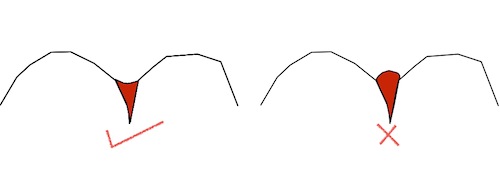Five Key Criteria for Sealant Success

We know that 80 percent of decay on young permanent teeth occurs in pit and fissure areas, and sealants have proven to be a very useful prevention tool. However, applying these sealants on permanent molars successfully is not always easy—especially in a young six-year-old.
The following five criteria based on a review of published research will help improve sealant success with ease and efficiency.
1. Acid etch clean enamel surface: Although use of self-etch+prime+bond agents has been suggested, acid etch with 35 percent phosphoric acid for 15 seconds gives a superior outcome (4). It is important that the enamel surface is cleaned of the plaque and salivary pellicle food debris first. A quick clean with pumice and a prophy cup helps achieve this.
2. Avoid saliva contamination: Use of Isolite or similar isolation device can help prevent saliva contamination, which is the most common cause for sealant failure (2). Isolite allows the clinician to achieve consistent results in the most efficient manner. Used correctly with skilled hands this device is a huge comfort for the patient as well. For example, once placed, #3 and #30 both can be worked on simultaneously. In less than five minutes a clinician can pumice etch, apply sealant and cure both teeth. The Isolite position is then swapped to the other side and the same process can be repeated for #14 and #19.
If there is inadvertent contact of saliva after acid etch, just dry the enamel surface again until the frosty/chalky layer is re-established and then apply the sealant to cure. Studies have shown that it still can get you very close to ideal bond strengths.
3. Pit and fissure preparation not needed: For stained or deep fissures with “catch,” it has been suggested to open the grooves with fissurotomy burs. Such surface alterations are not needed and it’s best to keep the procedure simple. As long as the above steps are followed and the entire sealant stays locked-bonded onto the enamel surface, even if some microscopic decay gets sealed in, the bacteria will not get the substrate to produce acid. Studies have shown that such teeth stay stable and healthy just like ideal teeth with pristine enamel surfaces. The key is complete occlusion of the pits and fissures.
4. Complete seal is important: Studies have shown that partial or incomplete seal is no benefit at all (1). The tooth is at as much or greater risk of decay as an untreated tooth. Also, most sealant failures occur in the first six months so it’s important to evaluate at the follow-up hygiene visit and repair or redo if necessary.
5. Less is more: It is important to not overfill the pits and fissures. Keeping the bulk of the sealant to the minimum so that it just barely fills up the valleys and grooves is crucial. Bulky over-contoured sealants fail quickly.
References
1. Duangthip, Duangporn, and A. Lussi. “Variables contributing to the quality of fissure sealants used by general dental practitioners.” Operative dentistry 28.6 (2003): 756.
2. Feigal, Robert J. “Sealants and preventive restorations: review of effectiveness and clinical changes for improvement.” Pediatric Dentistry 20 (1998): 85-92.
3. Going, R. E., et al. “Four-year clinical evaluation of a pit and fissure sealant.” The Journal of the American Dental Association 95.5 (1977): 972-981.
4. Perry, Amber O., and F. A. Rueggeberg. “The effect of acid primer or conventional acid etching on microleakage in a photoactivated sealant.” Pediatric Dentistry 25.2 (2003): 127-131.
Vivek Mehta DMD, FAGD, Visiting Faculty, Spear Education. Follow him on Twitter @Mehta_DMD.
SPEAR campus
Hands-On Learning in Spear Workshops
With enhanced safety and sterilization measures in place, the Spear Campus is now reopened for hands-on clinical CE workshops. As you consider a trip to Scottsdale, please visit our campus page for more details, including information on instructors, CE curricula and dates that will work for your schedule.

By: Vivek Mehta
Date: March 12, 2014
Featured Digest articles
Insights and advice from Spear Faculty and industry experts


